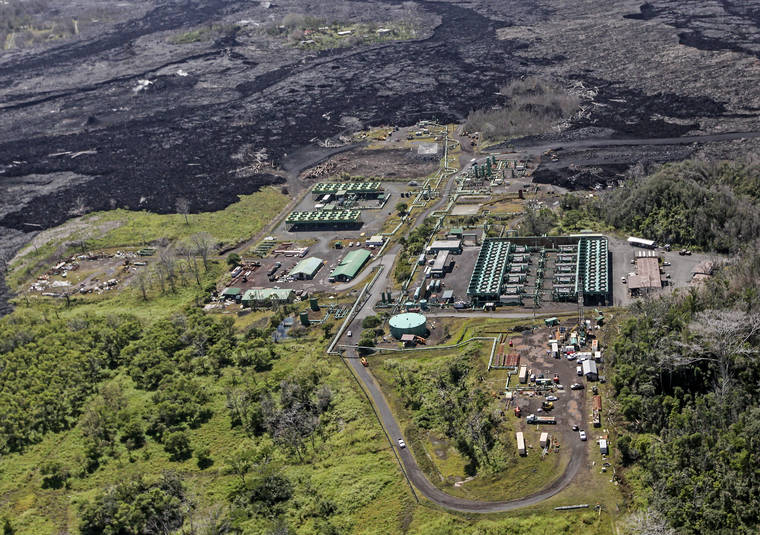New power agreement could be part of PGV rebuild
HILO — As Puna Geothermal Venture moves toward restarting following last year’s Kilauea eruption, a new power purchase agreement with Hawaii Electric Light Co. might be on the table.
Mike Kaleikini, senior director of Hawaii affairs for Ormat, PGV’s parent company, said talks are ongoing with HELCO, and revolve around delinking the cost of power from the price of oil. During peak hours, the first 25 megawatts PGV sells to HELCO is tied to that cost.
Essentially, that pays PGV, which had a capacity of 38 mgw, for reducing the amount of oil the utility uses to generate power.
But it also can lead to higher costs for customers.
Kaleikini said PGV is interested in delinking the cost of power from oil to provide more certainty about its revenue.
He said the parties entered those talks before the eruption started.
PGV, the state’s geothermal power plant, went offline after the start of the eruption May 3, 2018. The eruption isolated the plant and destroyed a substation.
It built a “pioneer road” over the hardened lava channel to reach the plant, which has been available to residents whose homes were isolated off Highway 132 since April 1.
In a May 9 letter, the Public Utilities Commission told HELCO a public hearing will be required for restoration of transmission lines to the plant. The PUC also is encouraging the parties to renegotiate the power purchase agreement to lower costs.
PGV and HELCO officials said they entered into the talks voluntarily.
A hearing is not required for service lines HELCO is providing to PGV, said Kevin Waltjen, HELCO’s Hawaii Island director.
After that’s installed, he said the service line can be extended to the Highway 132 kipuka, which could take a few more months.
Jordan Hara, PGV plant manager, said during a public meeting Friday evening in Pahoa that PGV is paying for the service line to its plant.
Waltjen said the cost of extending the lines to the kipuka will be absorbed by the utility.
Kaleikini said PGV is still targeting to be operational by the end of the year, assuming regulatory hurdles are cleared by then.
He said the plant continues to assess wells that were quenched or covered during the disaster.
Kaleikini said that doesn’t require new permits, though there are notification requirements for the state Department of Land and Natural Resources and state Department of Health.
It’s possible PGV will need to construct new wells. However, he stated PGV would not need new permits from DLNR, since it previously received approval to construct as many as 28.
Email Tom Callis at tcallis@hawaiitribune-herald.com.


